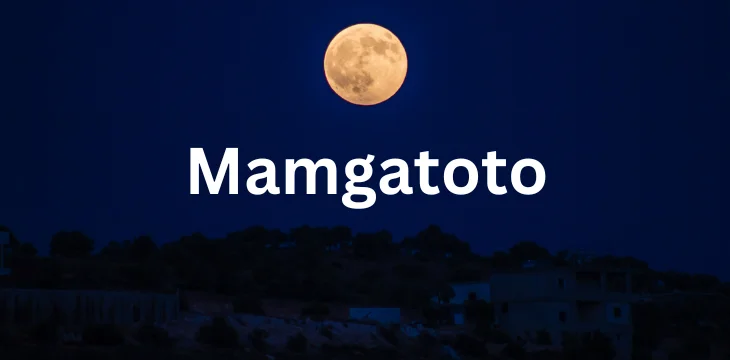General
italy Flag: A Symbol of Unity and Heritage
Published
4 months agoon
By
Farhanshah
Italy, a country renowned for its rich history, culture, and cuisine, boasts a national symbol that embodies its unity and heritage – the Italian flag. Known as “Il Tricolore,” the Italian flag is a source of pride and identity for Italians both at home and abroad. This article explores the history, symbolism, and significance of the Italian flag, along with answering some frequently asked questions about this iconic emblem.
History of the Italian Flag
Origins and Early Designs
The italy Flag, with its distinctive green, white, and red stripes origins can be traced back to the late 18th century, during a period of significant political upheaval in Europe. The design of the flag was inspired by the French tricolor, which became a symbol of liberty and revolution. The first use of a tricolor flag in Italy was by the Cispadane Republic, a sister republic of France, established in 1797. This flag featured horizontal stripes of green, white, and red.
Adoption of the Tricolor
The Italian tricolor as we know it today, with vertical stripes, was officially adopted on January 7, 1797, by the Cisalpine Republic. The green, white, and red colors were chosen to represent the new republic and its connection to the ideals of the French Revolution. Over the years, the flag underwent several modifications, reflecting the changing political landscape of Italy.
The Kingdom of Italy
With the unification of Italy in the 19th century, the tricolor became a symbol of the national movement. In 1861, when the Kingdom of Italy was proclaimed, the tricolor was officially adopted as the national flag. The Savoyard coat of arms was added to the center of the white stripe, symbolizing the monarchy’s role in unification.
The Italian Republic
After World War II, Italy became a republic, and the tricolor flag was retained as the national flag, but without the Savoyard coat of arms. The current design of the Italian flag, featuring three equal vertical stripes of green, white, and red, has been in use since June 19, 1946.
Symbolism of the italy Flag

The colors of the Italian flag hold deep symbolic meanings, though interpretations can vary. Here are some of the most commonly accepted explanations:
- Green: The color green is often associated with the country’s lush landscapes and agriculture. It also symbolizes hope and prosperity.
- White: White represents peace and purity, reflecting the nation’s desire for harmony and unity.
- Red: The color red signifies the bloodshed and sacrifice of those who fought for Italy’s independence and unification. It also represents bravery and strength.
The Italian Flag in Modern Times
Today, the Italian flag is a powerful symbol of national pride and identity. It is displayed prominently during national holidays, sports events, and other significant occasions. The flag is also a symbol of Italy’s contributions to art, culture, science, and global affairs.
Frequently Asked Questions about the Italian Flag
1. Why does the Italian flag have three colors?
The three colors of the italy Flag – green, white, and red – were inspired by the French tricolor and chosen to represent the ideals of liberty, equality, and fraternity. Each color also holds specific symbolic meanings related to Italy’s landscape, peace, and the sacrifices made for unification.
2. When was the Italian flag adopted?
The Italian flag was first adopted by the Cisalpine Republic on January 7, 1797. The current design, without the Savoyard coat of arms, has been in use since June 19, 1946, following the establishment of the Italian Republic.
3. What do the colors of the Italian flag represent?
- Green: Hope, prosperity, and the country’s landscapes.
- White: Peace, purity, and unity.
- Red: Sacrifice, bravery, and the bloodshed for independence.
4. How is the Italian flag used in Italy?
The Italian flag is used in various official and ceremonial contexts. It is displayed on government buildings, during national holidays such as Republic Day on June 2, and at international events where Italy is represented. It is also a common sight at sports events, particularly during soccer matches, where it symbolizes national pride and support for the Italian team.
5. Are there any specific rules for displaying the Italian flag?
Yes, there are guidelines for displaying the Italian flag. It should always be treated with respect and never allowed to touch the ground. When displayed alongside other flags, the Italian flag should be given a position of honor. For instance, when flown with other national flags, it should be placed on the viewer’s left.
Conclusion
The italy Flag, with its distinctive green, white, and red stripes, is more than just a national symbol; it is a representation of Italy’s rich history, cultural heritage, and the enduring spirit of its people. From its origins in the revolutionary fervor of the late 18th century to its current status as a symbol of unity and pride, the Italian flag continues to inspire and unite Italians around the world. Whether displayed at home, in public spaces, or on the international stage, Il Tricolore stands as a testament to the values and ideals that have shaped Italy into the vibrant nation it is today.
4o
You may like
General
Title: The Adventures of Silly Wankok: A Hero with a Heart of Humor
Published
6 days agoon
November 15, 2024By
Afnan SEO
Once upon a time, in a quaint, quirky village nestled at the edge of a forgotten forest, there lived a rather unusual hero named Silly Wankok. Silly was not your typical hero; he wasn’t particularly strong or wise, nor did he possess any superpowers. What set Silly apart was his irresistible charm, boundless optimism, and an unmistakable knack for finding himself in the most peculiar situations.
The village of Wiggleville, where Silly resided, was full of odd characters and eccentric customs. From the outside, it might seem like a small and sleepy place, but Wiggleville was a hub of oddities, brimming with tall tales and strange traditions. Every year, the town held a grand festival, the Wiggly Frolics, to celebrate all things ridiculous. This was Silly’s favorite event of the year, as it was the one time when his odd behavior would not just be tolerated—it would be celebrated.
Silly Wankok was a wiry young man with a mop of curly hair, usually sporting a big grin and a dusty set of overalls. His laughter was infectious, and his heart was pure. Though he often found himself in predicaments, his neighbors couldn’t help but adore him, for Silly’s antics always managed to bring smiles, even to the grumpiest villagers.
One sunny day, as preparations for the Wiggly Frolics were underway, Silly was tasked with an important responsibility: fetching the town’s prized golden goose from the forest. The golden goose was a rare bird said to bring good luck to Wiggleville whenever it made an appearance at the festival. The goose had a bit of an attitude, but Silly was determined to win it over and bring it back safely.
As Silly ambled through the forest, whistling a cheerful tune, he stumbled upon a sign that read: “Beware of the Whimsical Wood.” Silly, of course, took this as an invitation rather than a warning. He plunged deeper into the trees, paying little attention to the rustling sounds and the strange smells that filled the air. After all, Silly’s sense of adventure was rivaled only by his lack of caution.
Before long, Silly spotted a glint of gold in a clearing. “Ah-ha!” he exclaimed. There, nestled between the roots of an old oak tree, was the golden goose, its feathers shimmering in the sunlight. The goose, however, looked less than pleased to see him.
“Hello, there, Miss Golden Goose!” Silly greeted, bowing dramatically. The goose gave him a disdainful look, flapping its wings as if to ward him off.
“Come now, don’t be shy! I’m here to take you to the festival, where you’ll be treated like royalty!” Silly said, undeterred. He approached the bird with an outstretched hand, but the goose let out a loud honk and darted off into the underbrush.
Without hesitation, Silly chased after the goose, dodging branches and leaping over rocks. The chase led him deeper into the Whimsical Wood, where reality seemed to bend and twist around him. Trees whispered his name, mushrooms giggled as he passed, and a peculiar mist swirled at his feet.
After what felt like hours, Silly finally cornered the golden goose by a sparkling stream. “Gotcha!” he cried triumphantly, but the goose, true to its nature, had one last trick up its feathers. It flapped its wings and sprayed a cloud of golden dust into Silly’s face.
Silly sneezed, stumbling backward as the world spun around him. When he opened his eyes, he found himself not in the Whimsical Wood but in a strange, bustling town he’d never seen before. The town was full of colorful buildings shaped like candy, with streets paved in glittering stones. The townsfolk, who all seemed to be dressed in elaborate, whimsical costumes, looked at him with wide eyes.
“Welcome to Sillytown!” a voice boomed from behind him. Silly turned to see a jolly old man with a long beard and a mischievous twinkle in his eye. “I’m Mayor Mirth, and I must say, you’re quite the sight!”
Silly blinked, taking in the strange town around him. “Sillytown? Well, that’s perfect! I’m Silly Wankok!” he announced, introducing himself with a flourish.
The townsfolk cheered, as if Silly’s arrival was the most exciting event of the year. Mayor Mirth explained that Sillytown was a place where silliness reigned supreme, where laughter was currency, and where every citizen was required to wear at least one ridiculous accessory at all times. Silly felt right at home.
In the days that followed, Silly became a beloved figure in Sillytown. He participated in the town’s peculiar traditions, such as the Laughing Parade, where everyone marched through the streets giggling uncontrollably, and the Great Prank-Off, a competition to see who could pull off the most elaborate prank.
Despite all the fun, Silly couldn’t shake the feeling that he needed to get back to Wiggleville. The Wiggly Frolics were fast approaching, and without the golden goose, the festival would be incomplete. One evening, as he sat by the town’s sparkling fountain, he noticed a familiar glint of gold. There, perched on the edge of the fountain, was the golden goose, watching him with an amused gleam in its eye.
“Hey! I’ve been looking all over for you!” Silly exclaimed, rising to his feet.
The goose tilted its head, as if considering his words. Then, with a nod of its feathery head, it fluttered over to him, allowing him to gently pick it up.
As Silly cradled the golden goose, Mayor Mirth approached him. “It seems the goose has decided to help you return home,” he said, his eyes twinkling. “But remember, Silly Wankok, you’re always welcome in Sillytown.”
With a final farewell to his new friends, Silly closed his eyes, and in a swirl of golden feathers, he found himself back in the Whimsical Wood, the golden goose tucked safely under his arm.
When Silly returned to Wiggleville, the villagers erupted in applause. He had not only found the golden goose but also brought back stories of Sillytown, tales of laughter and friendship that captivated everyone. The Wiggly Frolics were a resounding success, and Silly Wankok was hailed as the hero of the festival.
From that day on, Silly continued to live his life with the same cheerful spirit, always ready for the next adventure. And whenever he felt a bit lonely, he’d glance at the sky, knowing that somewhere, in a magical town far away, his friends in Sillytown were laughing right along with him.
And so ends the tale of Silly Wankok, a hero of humor and heart, whose adventures remind us all to embrace our inner silliness and to cherish the joy that comes from being just a little bit ridiculous.
General
GatherEco NZ: Pioneering Sustainability and Eco-Friendly Solutions in New Zealand
Published
7 days agoon
November 14, 2024By
Afnan SEOAs environmental awareness continues to grow worldwide, New Zealand has emerged as a leader in eco-conscious initiatives and sustainability. One of the organizations at the forefront of this movement is GatherEco NZ, an innovative company that focuses on creating eco-friendly solutions tailored to meet New Zealand’s unique environmental needs. GatherEco NZ is not only helping businesses and individuals adopt sustainable practices but is also setting new standards in environmental responsibility within the country. This article explores the mission, services, and impact of GatherEco NZ and how it is shaping a greener future for New Zealand.
The Mission Behind GatherEco NZ
GatherEco NZ was founded with a clear purpose: to bridge the gap between economic growth and environmental sustainability. Its mission is to provide New Zealanders with practical, impactful, and affordable eco-friendly solutions that enable them to make a positive environmental difference without sacrificing quality of life or economic success. By offering a diverse range of sustainable products and consulting services, GatherEco NZ aims to make green living accessible and desirable for all, from households to large corporations.
This focus on accessibility sets GatherEco NZ apart. While environmental solutions often seem out of reach for small businesses or average households due to high costs or impracticality, GatherEco NZ’s team works to develop and deliver scalable solutions that are both effective and affordable. This approach is key to helping the organization achieve its broader vision of making New Zealand one of the most sustainable nations in the world.
Key Services and Offerings by GatherEco NZ
GatherEco NZ has a wide range of offerings designed to serve various needs within the New Zealand market. These services can be broadly categorized into three main areas: eco-friendly products, sustainability consulting, and educational outreach.
- Eco-Friendly Products: GatherEco NZ offers an extensive selection of sustainable products designed for both personal and business use. These products include biodegradable packaging, reusable household items, eco-friendly cleaning supplies, and even energy-efficient gadgets. One of their signature product lines is their plant-based packaging materials, which provide businesses with a sustainable alternative to single-use plastics. By promoting these products, GatherEco NZ helps reduce the overall carbon footprint of its clients, contributing to a larger movement toward waste reduction in New Zealand.
- Sustainability Consulting: GatherEco NZ recognizes that achieving sustainability is a journey, especially for businesses with existing infrastructures. Through their consulting services, the organization provides guidance and support to companies aiming to reduce their environmental impact. This includes assessing current operations, recommending greener alternatives, and creating customized plans to help businesses meet sustainability goals. GatherEco NZ’s consulting services are particularly popular among small to medium enterprises (SMEs), which often lack the resources to implement such changes independently. Through expert guidance and actionable strategies, GatherEco NZ empowers these businesses to transition to more eco-friendly practices without compromising profitability.
- Educational Outreach and Advocacy: Education plays a critical role in promoting sustainability, and GatherEco NZ is deeply committed to raising awareness and understanding among New Zealanders. The organization hosts workshops, seminars, and events focused on topics such as zero-waste living, renewable energy, and sustainable agriculture. These initiatives target a broad audience, including students, families, and business professionals, encouraging them to adopt sustainable habits and join New Zealand’s green movement. Additionally, GatherEco NZ collaborates with schools, non-profits, and government agencies to strengthen environmental education across the country.
The Impact of GatherEco NZ on New Zealand’s Sustainability Landscape
Since its inception, GatherEco NZ has made a noticeable impact on New Zealand’s sustainability landscape. By introducing eco-friendly products and consulting services, the organization has helped numerous businesses reduce their waste production and carbon emissions. Furthermore, the adoption of GatherEco NZ’s products has helped lower the overall consumption of non-renewable resources across multiple industries, including hospitality, retail, and manufacturing.
One of the company’s most notable achievements is its role in advocating for plastic reduction in New Zealand. By promoting plant-based packaging and other biodegradable alternatives, GatherEco NZ has supported nationwide efforts to minimize single-use plastics. These efforts align with New Zealand’s Zero Carbon Act and other national policies aimed at creating a carbon-neutral future.
In addition to influencing policy, GatherEco NZ has created a positive ripple effect within New Zealand’s business community. Many companies that have adopted GatherEco NZ’s solutions have reported a boost in customer satisfaction and brand loyalty, as consumers increasingly prefer brands that prioritize sustainability. This shift in consumer behavior has encouraged more businesses to take a closer look at their environmental practices, further accelerating the country’s journey toward sustainability.
Collaborations and Community Engagement
GatherEco NZ understands the importance of collaboration in tackling environmental issues. To amplify its impact, the organization frequently partners with other eco-conscious entities, including local governments, NGOs, and environmental organizations. These partnerships enable GatherEco NZ to participate in larger initiatives, such as nationwide cleanup efforts, reforestation projects, and environmental policy advocacy. Such collaborations not only enhance GatherEco NZ’s reach but also foster a sense of unity and purpose within the eco-conscious community in New Zealand.
One particularly successful collaboration is GatherEco NZ’s partnership with New Zealand’s Department of Conservation, which aims to restore native habitats and protect endangered species. Through this collaboration, GatherEco NZ provides funding, resources, and volunteer support for projects that improve biodiversity and promote ecosystem resilience. This hands-on approach to conservation has become a cornerstone of GatherEco NZ’s community engagement strategy, underscoring the organization’s commitment to preserving New Zealand’s unique natural heritage.
Challenges and Future Goals
While GatherEco NZ has made impressive strides, the journey toward sustainability is not without challenges. One of the primary obstacles is the cost associated with eco-friendly products and sustainable infrastructure, which can be prohibitive for some businesses and consumers. To address this, GatherEco NZ continuously invests in research and development to find more cost-effective solutions that lower the barrier to entry for green practices.
Looking ahead, GatherEco NZ has ambitious plans to expand its reach and influence. The organization aims to introduce a new line of renewable energy products tailored to New Zealand’s residential and commercial markets. These products include solar panels, wind turbines, and energy-efficient appliances, which will allow New Zealanders to reduce their reliance on fossil fuels. Additionally, GatherEco NZ is working on developing an online platform that will serve as a one-stop resource for eco-conscious consumers. This platform will provide access to sustainable products, expert advice, and community forums where users can share tips and success stories.
Another significant goal for GatherEco NZ is to contribute to New Zealand’s goal of becoming carbon-neutral by 2050. To support this goal, the organization plans to increase its efforts in carbon offsetting programs, including reforestation and wetland restoration projects. By creating more opportunities for individuals and businesses to participate in these initiatives, GatherEco NZ hopes to make carbon offsetting a mainstream practice in New Zealand.
Conclusion
GatherEco NZ is more than just an eco-friendly company; it is a movement toward a greener, more sustainable New Zealand. By providing accessible and impactful solutions, GatherEco NZ is empowering individuals and businesses to embrace sustainability and make a positive environmental impact. Through its products, consulting services, and educational outreach, GatherEco NZ has established itself as a vital player in New Zealand’s journey toward a more sustainable future.
As the organization continues to grow and evolve, GatherEco NZ remains committed to its mission of creating a greener, cleaner New Zealand. With ambitious goals and a community-driven approach, GatherEco NZ is not only addressing the environmental challenges of today but also paving the way for a healthier planet for future generations. For New Zealanders, GatherEco NZ represents a beacon of hope and a practical path toward sustainable living—one that proves that environmental responsibility and economic growth can go hand in hand.
General
Mamgatoto: The Mysterious Cultural Enigma
Published
1 week agoon
November 13, 2024By
Afnan SEO
In the world of folklore, tradition, and ancient practices, some words and names possess a mystique that draws in curiosity from every direction. “Mamgatoto” is one such term—a name that seemingly emerges from myth, mystery, and culture. Although it might sound unfamiliar to most, “Mamgatoto” carries with it layers of meaning, history, and symbolism.
Unveiling the Origins of Mamgatoto
Mamgatoto is not a term commonly found in books or historical records. However, like many traditional names, it resonates with elements of oral storytelling, passed down from generation to generation. In regions with a rich storytelling culture—such as parts of Africa, Asia, and South America—names like Mamgatoto may be deeply rooted in the local ethos, passed down with the essence of age-old wisdom, morals, and lessons.
The origins of “Mamgatoto” can be traced to ancient tribal languages, though there is debate about its specific place of origin. Linguists and cultural historians speculate that it may be rooted in a language where sounds symbolize elements of nature, family ties, or mythical beings. In several African languages, for example, the combination of syllables like “mam” might suggest a maternal figure or ancestral spirit, while “gato” could allude to elements of nature or animals.
In one interpretation, “Mamgatoto” could refer to a “Mother of the Land” or an “Ancestral Guardian,” a figure who serves as a spiritual protector of a tribe, village, or specific natural area. In some African folktales, such figures are believed to guard sacred forests, streams, and mountains, protecting the land from harm and ensuring the fertility of both nature and the people.
Mamgatoto in Myth and Storytelling
Legends surrounding Mamgatoto vary depending on the region, but common themes often emerge. In many stories, Mamgatoto appears as a wise, ancient spirit, often seen as a matronly figure or an elder in disguise, who helps the protagonist in their time of need. Her appearance is believed to be subtle, sometimes as an old woman carrying bundles of herbs, or a calm animal that suddenly appears to lead lost travelers to safety.
In one legend from an East African community, Mamgatoto is said to appear to young women at dusk, teaching them the secrets of the forest, medicine, and survival. In these tales, Mamgatoto is depicted as a protector of women, particularly mothers and daughters, guiding them and empowering them with wisdom. Through her stories and guidance, young women are taught about life’s trials, resilience, and the natural cycles of birth, life, and death.
Another popular story presents Mamgatoto as a shape-shifting spirit who protects children from harm. According to some variations, she can transform into a leopard or a bird, swiftly coming to the aid of children who are lost, injured, or threatened. This protective side of Mamgatoto highlights her role as a symbol of nurture and care, making her a revered figure among communities who honor her.
Symbols and Representations of Mamgatoto
The name “Mamgatoto” symbolizes more than just a character; it represents a worldview, a belief in the unity of humanity and nature. The stories associated with her teach respect for nature, the importance of community, and the value of wisdom. Many of these themes resonate in African cosmology, where spirits, deities, and ancestral figures embody values and morals for communities.
In some cultures, statues, masks, or symbols representing Mamgatoto may be created by artisans. These representations often have distinct features, such as earthy colors and animal motifs, symbolizing the spirit’s connection to the land. These artifacts are sometimes displayed in community centers, shrines, or homes, serving as a reminder of her protective presence.
In addition, Mamgatoto is symbolically represented by plants and herbs. Herbalists and healers often connect her with certain plants that hold medicinal properties, believed to have been granted by Mamgatoto herself. These plants are used in rituals and healing practices, where the healer calls upon her spirit for guidance. This practice not only keeps her memory alive but also reaffirms the community’s commitment to natural medicine and ecological harmony.
Mamgatoto in Modern Context
As more people move to cities and the traditional ways of life evolve, some aspects of Mamgatoto’s story and role have also shifted. In modern communities, Mamgatoto has come to symbolize the importance of heritage, resilience, and respect for cultural roots. Cultural festivals, storytelling events, and heritage preservation efforts have emerged to keep her legend alive, especially as younger generations may have less exposure to oral traditions.
The symbolism of Mamgatoto also extends into environmental conservation efforts. Some environmental groups and community leaders have invoked her spirit to rally communities in defense of forests, rivers, and wildlife. By drawing on the powerful imagery of Mamgatoto as a “Guardian of the Land,” these advocates encourage respect and care for natural resources, emphasizing the interconnectedness of humanity and nature.
In addition, Mamgatoto has found her way into the creative arts. Artists and writers have adapted her story in contemporary literature, paintings, and films, presenting her as a modern guardian or environmental warrior. Through these adaptations, the spirit of Mamgatoto reaches a global audience, transforming from a local legend into a symbol of universal values—protection, nurture, and respect for the Earth.
Lessons from Mamgatoto
The legacy of Mamgatoto is steeped in lessons that transcend time and culture. Her image as a wise, nurturing figure teaches us about the value of compassion, patience, and understanding. Her stories remind us that nature is both a source of life and a force to be respected and protected.
Mamgatoto also teaches us about community and connection. In many of her stories, she appears when people are in need, symbolizing the strength that comes from unity and mutual support. This theme of communal care is especially relevant in today’s fast-paced world, where individuals are often encouraged to act independently. Through Mamgatoto’s stories, we are reminded of the power of collective wisdom and the importance of nurturing relationships within our communities.
Her legend also calls attention to the need for balance in life, particularly the balance between development and environmental stewardship. In a time where ecological crises threaten the well-being of future generations, Mamgatoto’s story resonates as a call for sustainable practices. Her protective stance towards the land reminds us of the duty we have to preserve it, not only for ourselves but for those who come after us.
Mamgatoto: A Legacy of Wisdom
Mamgatoto may be a lesser-known figure, but her legend lives on, preserved by the communities who honor her legacy and by modern storytellers who bring her into new contexts. Whether she appears as an elder, a spirit, or an animal, Mamgatoto embodies the values of wisdom, care, and connection to the Earth.
Through her, we see a reflection of our own role as guardians of the natural world and caretakers of one another. Mamgatoto’s legacy is not simply one of ancient myths but a reminder that there is power in heritage, strength in unity, and wisdom in honoring the environment. Whether in rural villages, bustling cities, or through creative expressions worldwide, Mamgatoto’s spirit continues to inspire, reminding us all of the enduring truths carried by ancient traditions and the stories they leave behind.

Unlock Health: Notoginseng Root Extract Benefits

Bart Springtime: A Journey Through Nature, Renewal, and the Cycle of Seasons

Title: The Adventures of Silly Wankok: A Hero with a Heart of Humor
Trending
-

 Tech4 weeks ago
Tech4 weeks agoEolaneday: A Celebration of Connection, Innovation, and Nature
-

 Entertainment2 weeks ago
Entertainment2 weeks agoSoaper TV: Revolutionizing Home Entertainment
-

 Tech4 weeks ago
Tech4 weeks agoDacac24: The Future of Digital Architecture and Cybernetic Connectivity
-

 News2 weeks ago
News2 weeks agoRI NewsBreak: Rhode Island’s Source for Real-Time News and Local Stories
-

 News6 days ago
News6 days agoBart Springtime: A Journey Through Nature, Renewal, and the Cycle of Seasons
-

 General7 days ago
General7 days agoGatherEco NZ: Pioneering Sustainability and Eco-Friendly Solutions in New Zealand
-

 General3 weeks ago
General3 weeks agoAbraham Quirós Villalba: A Visionary in Environmental Conservation and Sustainable Development
-

 HEALTH & FITNESS2 weeks ago
HEALTH & FITNESS2 weeks agoThe “Fapdemic”: A New Phenomenon or a Fad?

